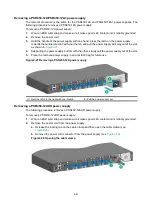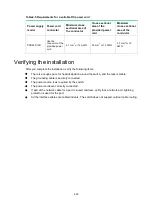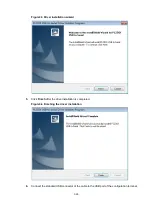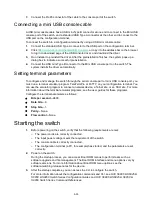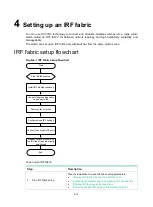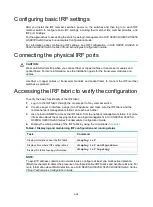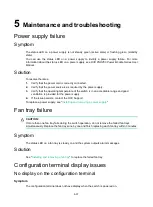
4-34
Figure4-3 IRF fabric in ring topology
You can set up 100/40-GE IRF physical connections by connecting only QSFP28 ports between the
switches.
You can bind several ports to an IRF port for increased bandwidth and availability.
Identifying physical IRF ports on the member switches
Identify the QSFP28 ports for IRF connections on the member switches according to your topology
and connection scheme.
All the QSFP28 ports on the switch can be used for IRF connections.
Planning the cabling scheme
You can use only QSFP28 transceiver modules and optical fibers, QSFP28 fiber cables, QSFP28
copper cables, QSFP+ transceiver modules and optical fibers, QSFP+ fiber cables, or QSFP+
copper cables to connect the switches for IRF connections.
If the IRF member switches are far away from one another, choose QSFP+/QSFP28 transceiver
modules and optical fibers. If the IRF member switches are all in one equipment room, use
QSFP+/QSFP28 copper or fiber cables. For more information about transceiver modules and cables
available for the switch, see
H3C S6825 Switch Series Hardware Information and Specifications
.
The following subsections describe several H3C recommended IRF connection schemes by using
QSFP28 transceiver modules and optical fibers, QSFP28 copper cables, and QSFP28 fiber cables.
All these schemes use a ring topology.
Connecting the IRF member switches in one rack
shows an example for connecting four IRF member switches in a rack. The switches in the
) are in the same order as connected in the rack.
IRF-port2
IRF-port2
1
2
3
IRF-port1
IRF-port2
IRF-port1
IRF-port1


